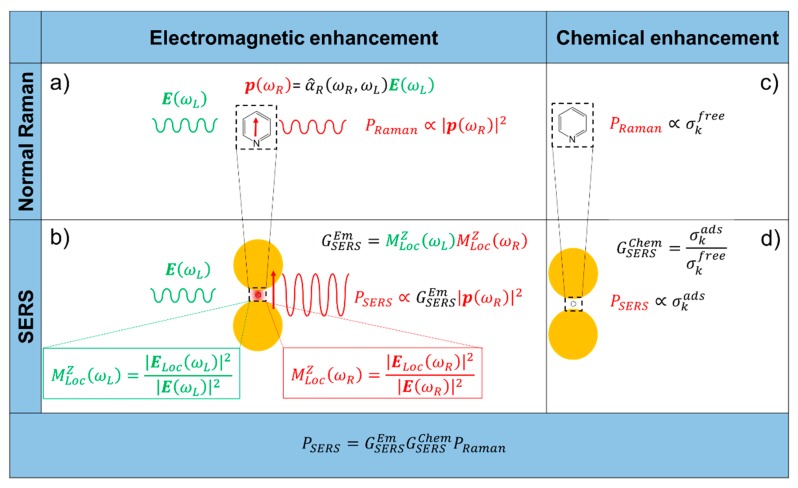Figure 1.
Electromagnetic enhancement. (a) Normal Raman. A laser radiation, with electric field oscillating at (angular) frequency impinges on a molecule, characterized by a Raman polarizability tensor . The laser induces a dipole oscillating at the Raman frequency (vertical red arrow, ); the Raman power radiated by this dipole is proportional to the square modulus of the dipole itself. (b) Surface enhanced Raman scattering (SERS) electromagnetic enhancement. When the molecule is placed near a plasmonic substrate, the electric field experienced by the molecule is , normally much stronger than the input laser ; this local field enhancement is quantified by . Moreover, the presence of the plasmonic substrate also enhances the efficiency with which the dipole emits Raman radiation; this re-radiation enhancement is quantified by . The total electromagnetic enhancement factor, within the approximation, is defined as: . Chemical enhancement. (c) Normal Raman. The vibrational modes of a molecule in free space are characterized by the cross-section(s) ; (d) SERS chemical enhancement. The interaction with the plasmonic substrate modifies the structure of the molecule and consequently also the cross-section(s) of its modes (). The chemical enhancement is quantified as .

